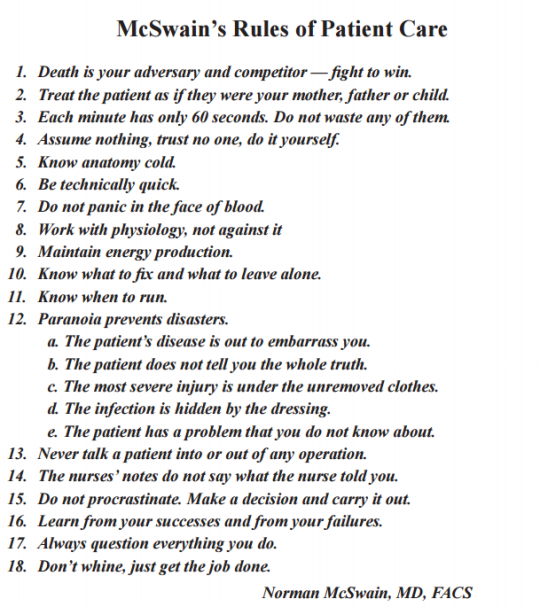There are two broad categories of things that kill trauma patients. No, I’m not talking about violent penetrating injury, falls, car crashes, or any other specific mechanisms. I am referring to the end events (on a macro scale) that take their lives.
These two basic killers are: hemorrhage and brain injury. The vast majority of the time, a dying trauma patient has either suffered a catastrophic brain injury, or has ongoing and uncontrolled bleeding.
The Second Law Of Trauma
Your trauma patient is bleeding to death until you prove otherwise.
Obviously, there are a few uncommon exceptions to this rule. This includes sources of obstructive shock such as tension pneumothorax and tamponade. But by and large, you will find this law a solid one.
Bottom line: Since there is little we can do above and beyond the basics in the ED for severe brain injury, your focus must be on hemorrhage. There are lots of things we can do about that, and the majority involve an operating room. Always assume that there is a source of hemorrhage somewhere, and it just hasn’t shown itself yet. There can be no rest until you prove that the source does not exist. And hopefully, you do that very, very quickly.


